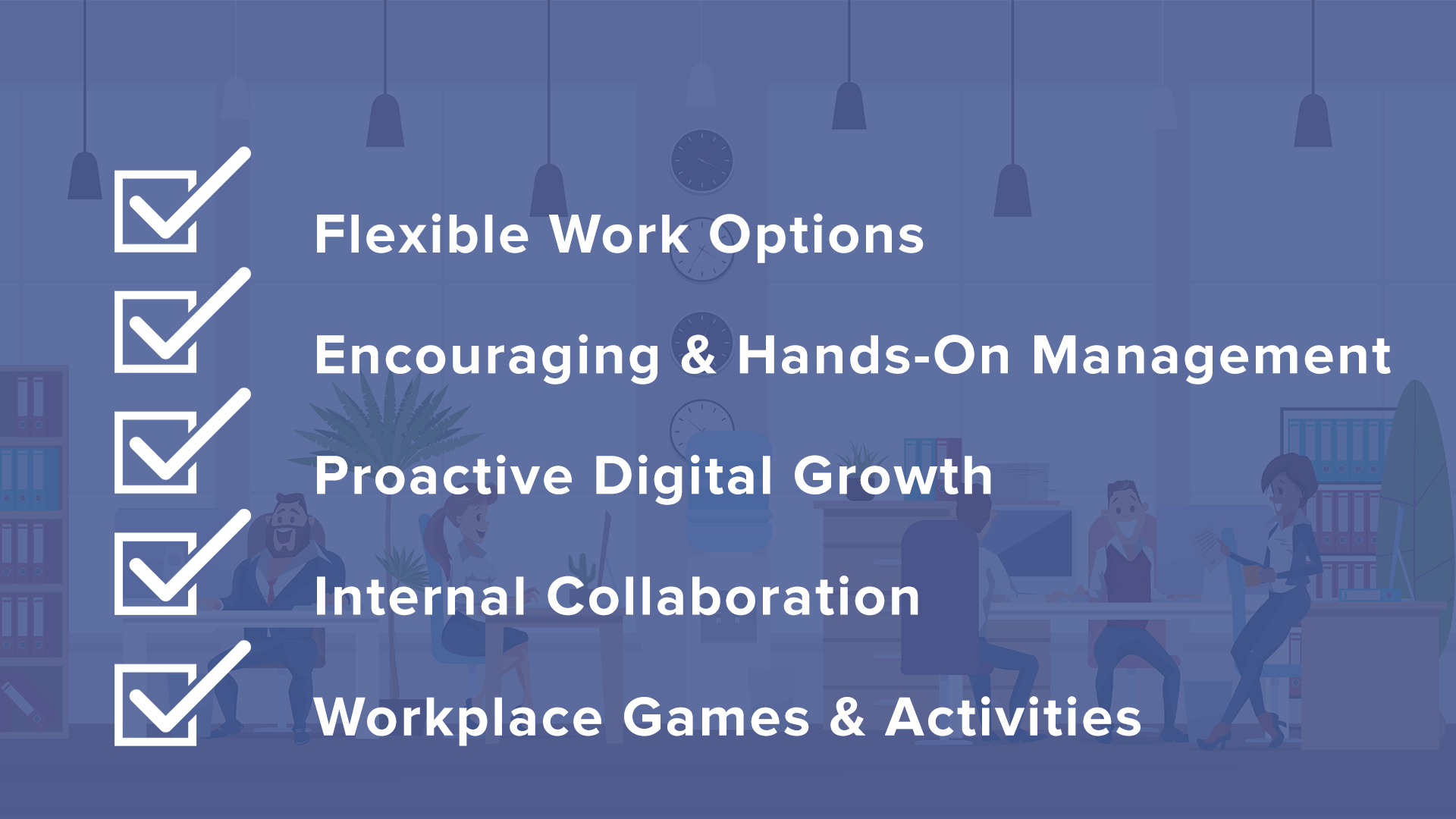Today’s up-and-coming job candidates are looking for different things than we might have in decades past. While there’s still a clear appreciation for things like established company structure, growth opportunity, and career stability, young graduates and people who are new to the workforce also want to know that we can thrive as individuals on our way up, and that companies are taking a modern approach and not merely adhering to traditional models. In other words, we often focus as much on how we experience work in our day-to-day lives, and where we can help take a company, as we do on the aforementioned traditional perks people have always sought out.
To expand on this idea somewhat, I’m identifying some of the characteristics I look for in an appealing and innovative company.
Flexible Work Options
There’s a misconception that flexible work necessarily means contracted or freelance contribution. In an examination of some of the top companies facilitating remote work, however, Forbes contends that most workers are full-time employees in these situations. This means there are plenty of traditional positions out there that still allow for flexible hours, work-from-home days, or even paid travel – all of which are immensely valuable to younger generations. Of course accountability is still necessary within these setups, but I view companies offering flexible work hours to be forward-looking in prioritizing employee comfort and convenience.
Encouraging & Hands-On Management
Plenty of logical arguments suggest that management should remain somewhat detached from a workforce, and I wouldn’t propose that a manager or other business leader should necessarily become best friends with an employee. With that said though, I find that young people tend to recognize more encouraging, hands-on management as a positive indication of a company’s potential. A company with leadership that encourages creativity, participation, and innovation on the part of employees conveys a certain sense of energy that people who have grown up in the “startup culture” age tend to find inspiring.
Proactive Digital Growth
Younger members of today’s workforce tend to understand that digital growth is not an option, and that digital marketing in particular is a sign of a savvy business. We also understand that it can be a burdensome and time-consuming process when it’s not handled correctly. Ayima points out that development resource can be time intensive when it comes to everyday practices like SEO and content optimization, both of which are needed for a company to expand its digital reach. And this actually creates a clear dividing line that is worth looking for when assessing a company: Can it manage those time-intensive marketing efforts in a way that helps the company without putting undue burden on employees?
Internal Collaboration
Collaborative efforts in the modern workplace can go too far. For instance, much has been written about the fact that digitally connected employees feel as if they’re “on the clock” at all hours and from all places. That produces stress and can lead, fairly quickly, to burnout. However, it’s also undeniable that some level of internal collaboration can help to create a positive, active atmosphere that invigorates young employees. Slack discusses tech that brings team together specifically, and this is certainly something I’d look for in any company today. Internal communication channels that allow for easy group chats, one-on-one communications, and file sharing appear very much to be representative of forward-looking, modern businesses.
Workplace Games & Activities
The image of a modern workplace featuring wide-open rec rooms stocked with foosball tables and video game consoles has probably gone a little too far; no office should be turned into a full-fledged arcade or clubhouse. However, the idea behind this image – fostering employee socialization and providing a place to healthily disengage for brief periods of time – is legitimate. For that reason, the presence of certain types of games and activities for employees can still be a sign of a modern company with a healthy culture. This site’s own look at virtual activities for employees does a nice job of conveying what these sorts of things might look like, covering not the standard, cliché rec room options but instead interactive virtual experiences that actually involve workplace concepts or coworker relations. It’s easy to see how such experience can not only provide much-needed break time, but also a means of improving morale and office culture.
Any or all of these features and tendencies can be indicative of an innovative company – and thus one that the emerging young workforce will take interest in.
Written exclusively for Eloops
by Anna Thurman
Anna Thurman is a freelance writer and mother of two who specializes in writing about entrepreneurship, ways to promote industry growth, and marketing-related topics. The nature of innovation is particularly important to her because she used to be at a stay at home parent. However, she eventually started her own small business selling children’s clothing and discovered the value of flexible work hours and the power of SEO. In her spare time, she enjoys watching foreign-language films and traveling across Southeast Asia with her family.


Leave a Reply